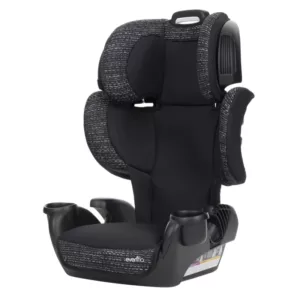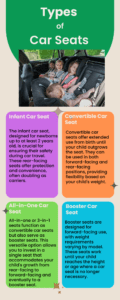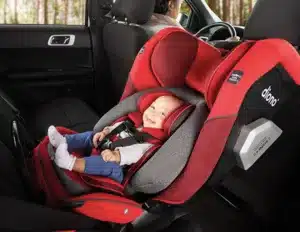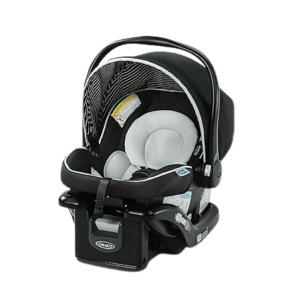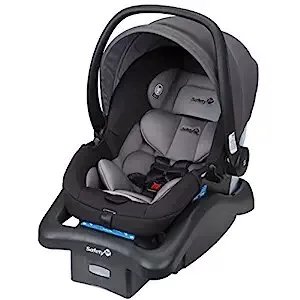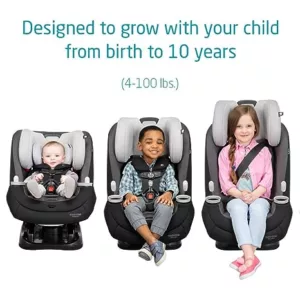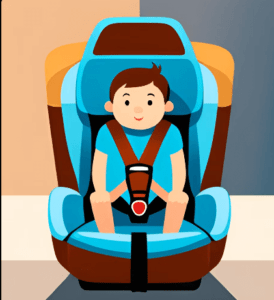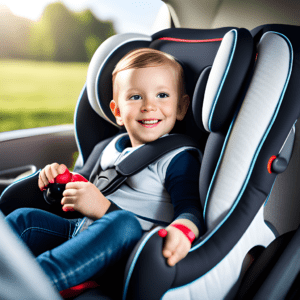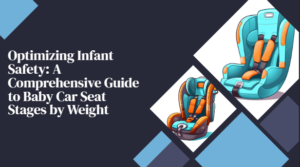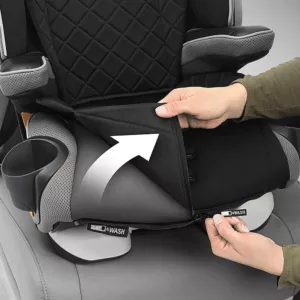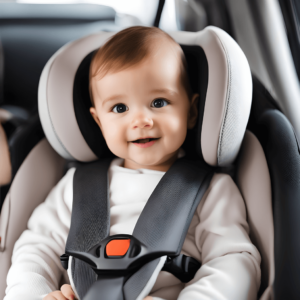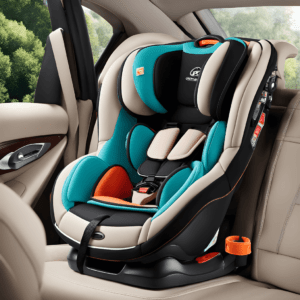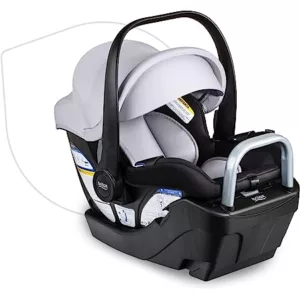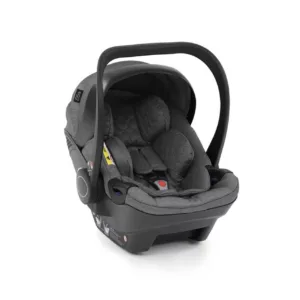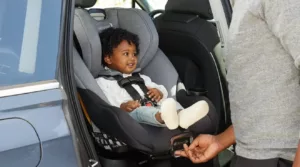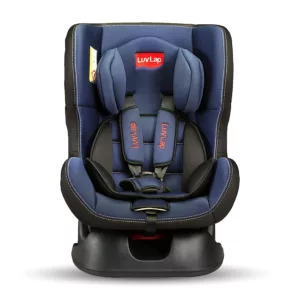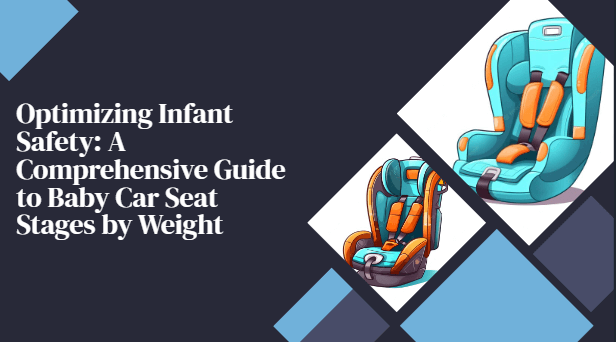
What are the Baby Car Seat Stages by Weight? Learn about the different baby car seat stages based on weight for a safer and more secure ride.
Thank you for reading this post, don't forget to subscribe!In parenting and child safety, few matters are as critical as ensuring your little one is secure in their car seat during every journey. “What are the Baby Car Stages by Weight?” delves into the connection between your baby’s weight and the car seat choice. As parents, caregivers, and guardians, understanding how to navigate the intricacies of car seat stages based on your child’s weight is paramount to their safety on the road. In this comprehensive guide, we’ll walk you through the stages, legal requirements, safety statistics, and practical tips to help you make the right choices at every stage of your child’s growth, ensuring their well-being during every car ride.
Table of Contents
Toggle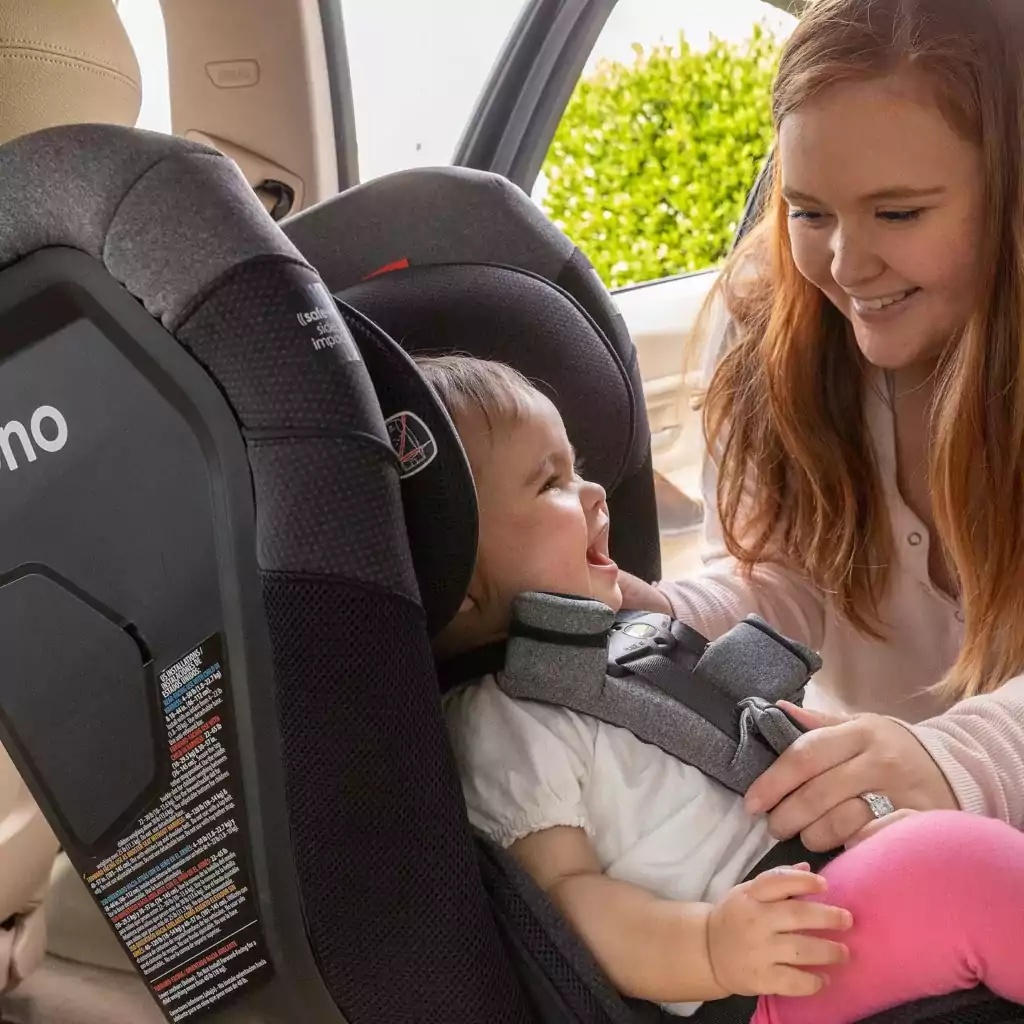
When securing your child in a car seat, it’s essential to understand that car seat stages are not solely determined by age; they are also closely tied to weight. This approach ensures that car seats provide optimal protection and comfort for children of varying sizes and developmental stages.
For example, let’s start with infants. Infants typically begin their car seat journey in rear-facing seats. However, the transition out of this stage is not solely based on age but also weight. Car seat manufacturers often specify a weight limit for rear-facing seats, which could be 22 to 35 pounds, depending on the seat model. It means that even if your child hasn’t reached a certain age, you should transition them to the next stage when they exceed the recommended weight limit.
Considering both age and weight, this dual approach ensures that your child remains in the appropriate baby car seat stage for their size and developmental stage, providing the safest possible travel experience. It’s crucial to consult your car seat’s user manual to find the specific weight and age guidelines set by the manufacturer for your particular seat, as they can vary. By adhering to these guidelines, you can make informed decisions about when to transfer your child to the next car seat stage, ultimately enhancing their safety while on the road.
Weight-Based Transition Points – Toddler Car Seat Weight Range
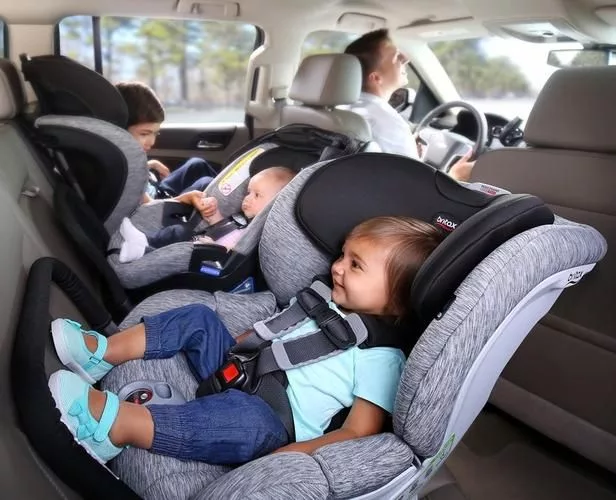
Understanding weight-based transition points in car seat stages is crucial for ensuring your child’s safety as they grow. These key milestones mark the moments when it’s time to move from one type of car seat to another, accommodating your child’s increasing weight and size. Let’s delve into these important transition points and provide specific weight ranges for each stage.
| Car Seat Type | Recommended Weight Range |
|---|---|
| Rear-Facing Infant Seat | Typically 4 to 40 pounds |
| Convertible Seat | Usually 5 to 65 pounds |
| Forward-Facing Seat | Typically 20 to 90 pounds |
| Booster Seat | Generally 30 to 120 pounds |
| Seat Belt Only | Depending on state laws, typically 80 to 100 pounds or when the child is 4 feet 9 inches (57 inches) tall |
Rear-Facing Infant Seat to Convertible Seat
Infants typically start in rear-facing infant car seats. However, when your baby reaches the specific weight limit recommended by the car seat manufacturer (usually around 22 to 35 pounds), it’s time to transition to a convertible car seat. This stage change allows your child to remain rear-facing for an extended period, which is safer as it offers better protection for their head, neck, and spine.
Convertible Seat to Forward-Facing Seat
The next significant transition occurs when your child has outgrown the rear-facing capacity of their convertible seat. It typically occurs when your child reaches the uppermost weight threshold outlined by the car seat’s manufacturer (often around 40 to 65 pounds). At this point, you should switch to a forward-facing car seat with a harness, ensuring your child is securely fastened and protected.
Forward-Facing Seat to Booster Seat
As your child grows, they will eventually outgrow their forward-facing car seat. Typically, this happens when they reach a weight limit of around 65 to 80 pounds. When this occurs, it’s time to transition to a booster seat, which helps position the seat belt correctly over your child’s body, enhancing their safety during car rides.
Booster Seat to Seat Belt Only
The final transition occurs when your child has grown sufficiently to use the vehicle’s seat belt alone. It usually happens when they meet the height and weight requirements set by your state’s laws, which can vary but typically fall in the range of 4 feet 9 inches (57 inches) tall and 80 to 100 pounds
These weight-based transition points are crucial for ensuring your child’s car seat remains effective in protecting them as they grow. Remember that these weight ranges are general guidelines; always refer to your specific car seat’s user manual for manufacturer-recommended weight limits and guidelines, as they may vary depending on the make and model of the car seat. Adhering to these transitions will help keep your child safe during each stage of their development while traveling in a vehicle.
What is a Group 1 2 3 Car Seat?
Group 1, Group 2, and Group 3 car seats are categories used to classify child car seats based on the weight or size of the child for whom they are suitable. These categories are often used in Europe and other parts of the world, and they help parents and caregivers choose the right car seat for their child’s age and size.
Group 1 Car Seats: Group 1 car seats are designed for children who weigh between approximately 9 kilograms (20 pounds) and 18 kilograms (40 pounds), generally for children from around 9 months to 4 years old. These seats are usually forward-facing and have a five-point harness system to secure the child.
Group 2 Car Seats: Group 2 car seats are intended for children who weigh between approximately 15 kilograms (33 pounds) and 25 kilograms (55 pounds), which typically includes children aged around 4 to 6 years old. These seats may be forward-facing and use the car’s seat belt system to secure the child.
Group 3 Car Seats: Group 3 car seats are suitable for children weighing approximately 22 kilograms (48 pounds) and 36 kilograms (79 pounds), covering kids around 6 to 12 years old. These booster seats position the child at the right height to use the car’s seat belt. They do not have a built-in harness system but help ensure the car’s seat belt fits the child properly.
It’s important to note that car seat regulations and classifications may vary by country or region, so it’s essential to check the specific requirements and standards in your area to ensure you are using the appropriate car seat for your child’s age, weight, and height. Additionally, it’s recommended to follow the manufacturer’s guidelines and instructions for installing and using the car seat to ensure safety.
Here’s a table summarizing the stages by weight, recommended baby weight ranges, and the type of car seat recommended based on the information provided:
Stages by Weight | Baby Weight | Type of Car Seat Recommended |
Group 1 | 9 kg – 18 kg (20 – 40 lbs) | Forward-facing car seat with a 5-point harness system. |
Group 2 | 15 kg – 25 kg (33 – 55 lbs) | Forward-facing car seat, often using the car’s seat belt system. Some combination seats may work. |
Group 3 | 22 kg – 36 kg (48 – 79 lbs) | Booster seat to position the child at the right height for the car’s seat belt. No built-in harness. |
At What Age or Weight do you Change Car Seats?
This Table will help you understand when to change car seats based on weight and age:
Weight Stages | Age | Type of Car Seat |
Infants (Newborn to 9-13 kg or 20-30 lbs) | Birth to around 1 year+ | Rear-facing infant car seat (rear-facing convertible or all-in-one seat for taller babies). |
Toddlers and Young Children (9-13 kg to 18-25 kg or 20-30 lbs to 33-55 lbs) | Around 1 year to 4+ years | Rear-facing convertible car seat, rear-facing/forward-facing combination seat. Continue rear-facing until the seat’s weight/height limits are reached. |
Preschoolers and Young Children (18-25 kg to 22-36 kg or 33-55 lbs to 48-79 lbs) | 4+ years to 6+ years | Forward-facing car seat (convertible or combination seat) following manufacturer’s guidelines for height and weight limits. |
Older Children (22-36 kg or 48-79 lbs and above) | 6+ years and beyond | Booster seat until the child can safely use the vehicle’s seat belt alone, typically around 22 kg (48 lbs) and above, and when they can sit comfortably with the seat belt properly positioned. |
Safety Implications – Weight-Appropriate Car Seat Selection
Understanding the safety implications of selecting the appropriate car seat stage based on your baby’s weight is paramount. Making the right choice may reduce the risks associated with car accidents, whereas improper car seat selection can have grave consequences. Here’s why it’s crucial to get it right:
When you use a car seat that aligns with your baby’s weight, you ensure they are securely wrapped. In the unfortunate event of a car accident or sudden braking, the car seat’s design and the alignment of your child’s weight with the seat’s specifications work together to distribute and absorb impact forces. It means that the head, neck, and spine—the most vulnerable parts of a child’s body—are well-protected.
Conversely, choosing a baby car seat stage that doesn’t match your baby’s weight can significantly compromise their safety. An oversized or undersized car seat may not securely restrain your child during a collision, increasing the risk of injury or death. For instance, using a rear-facing infant seat with a baby who has outgrown the weight limit may result in less effective restraint, leaving your child vulnerable to head and neck injuries.
The safety implications are clear: selecting the right car seat stage for your baby’s weight is not just a matter of convenience or following regulations; it’s a critical decision that directly impacts your child’s safety during every car journey. By understanding and adhering to these guidelines, you’re taking a proactive step toward protecting your child from harm on the road.
Weight Tracking – How do Car Seats Detect Weight?

Keeping tabs on your baby’s weight is essential to ensuring they are safely positioned in the correct car seat stage. Here, we’ll explore methods for parents to effectively track their baby’s weight and explain why this practice is important.
One of the most straightforward methods for weight tracking is through regular visits to your child’s healthcare provider. Pediatricians are equipped with accurate scales and expertise to monitor your baby’s growth trajectory during routine check-ups. These visits provide valuable insights into your child’s development and an opportune time to discuss the appropriateness of their current car seat stage.
Another option is to use a home scale designed for infants. These scales are user-friendly and allow you to monitor your baby’s weight between doctor’s appointments closely. Remember to follow the scale’s instructions carefully to obtain accurate readings.
Now, why is weight tracking so crucial? Firstly, babies grow at varying rates, so their weight can change rapidly during their early years. By tracking these changes, you can ensure your child is always in a car seat that matches their current weight range.
Moreover, weight tracking helps you anticipate when to transition to the next car seat stage. Waiting too long to switch to a larger car seat can expose your child to unnecessary risks, while premature transitioning can also be unsafe. By maintaining a record of your baby’s weight, you can make informed decisions about when to move them to the next appropriate car seat stage, enhancing their safety during car journeys.
In essence, weight tracking is a proactive approach that empowers parents to make informed choices about their child’s car seat, aligning it precisely with their weight and age. This diligent practice ensures your child’s safety remains a top priority as they continue to grow and develop.
What is the Minimum Weight for Baby Car Seat?
The minimum weight requirement for a baby car seat, particularly for rear-facing infant car seats, can vary depending on the specific car seat model and manufacturer. However, a common minimum weight requirement for many rear-facing infant car seats is typically around 4 pounds (1.8 kilograms).
It’s important to check the manufacturer’s guidelines and instructions for the specific car seat you are using, as weight requirements can vary from one model to another. Some car seats may be designed to accommodate smaller or premature infants, while others may have a slightly higher minimum weight requirement.
Additionally, always ensure that your child’s weight is within the car seat’s weight range before using it. Using a car seat that is not appropriate for your child’s weight can compromise their safety. If your baby is born prematurely or has a very low birth weight, consult with your healthcare provider and the car seat manufacturer to find the most suitable and safe car seat for your baby’s specific needs.
Manufacturer Guidelines – Car Seat Weight Restrictions
Adhering to the manufacturer’s guidelines for car seat usage is a cornerstone of child safety during car travel. These guidelines, typically encompass weight and age recommendations, are pivotal in ensuring your child’s well-being. Here’s why it’s crucial to pay close attention to them.
Car seat manufacturers invest substantial time and resources in designing their products to provide optimal safety and protection for children of different sizes and developmental stages. As such, their guidelines are meticulously crafted to align with each car seat model’s specific features and capabilities. It includes recommended weight limits for each stage based on extensive safety testing and engineering.
Real-Life Scenarios – Baby Car Seat stages by Weight
To truly understand the impact of weight-based car seat guidelines on child safety, let’s delve into real-life scenarios that highlight the critical importance of making the right choices at each car seat stage. These stories shed light on the consequences of not adhering to these guidelines.

Scenario 1: The Weight Mismatch – Baby Car Seat Stages by Weight
Imagine a scenario where a well-intentioned parent keeps their baby in a rear-facing infant seat despite surpassing the weight limit. In a sudden collision, the forces generated are too much for the infant seat to handle. The consequences are dire, as the baby’s head and neck aren’t adequately supported, leading to severe injuries. This tragic situation illustrates how neglecting weight-based guidelines can have devastating effects.
Scenario 2: Premature Transition – Baby Car Seat Stages by Weight
In another scenario, a parent prematurely transitions their child to a booster seat, assuming it’s time-based on age alone. However, the child’s weight still falls below the booster seat’s recommended range. During a sudden stop, the seat belt doesn’t provide proper restraint, resulting in a minor collision and a major injury. This story underscores that adhering to weight-based guidelines is crucial, even if your child seems older than their car seat stage suggests.
Scenario 3: Weight-Appropriate Choice – Baby Car Seat Stages by Weight
Now, let’s consider a positive example. A vigilant parent consistently tracks their child’s weight and transitions them to the next car seat stage based on manufacturer guidelines. In a real-life accident, the child remains securely fastened and protected within their car seat, minimizing the risk of severe injury. This case demonstrates that diligent adherence to weight-based guidelines can make a life-saving difference.
These real-life scenarios serve as sobering reminders of the very real consequences of not following weight-based car seat guidelines. They underscore that parents’ decisions regarding car seat stages are not trivial; they directly impact a child’s safety on the road. By learning from these stories and consistently adhering to weight recommendations, parents can ensure their children remain safe during car journeys.
Underlining the importance of these guidelines, it becomes essential to emphasize that they aren’t mere suggestions; rather, they represent crucial safety instructions. Straying from these instructions can endanger your child’s safety in the event of a car accident
Parents and caregivers should make consulting the car seat’s user manual a standard practice. The user manual serves as an all-inclusive reference, furnishing precise information regarding specific details on weight limits, age appropriateness, installation instructions, and usage tips tailored to the exact model you own. It’s your roadmap to ensure that your child is placed in the right car seat stage according to their weight and age.
By meticulously following the manufacturer’s guidelines and consulting the user manual, you’re taking a proactive step toward creating a safer car travel experience for your child. It’s a small but vital effort that significantly contributes to your child’s well-being on the road, providing the peace of mind that you’ve chosen the right car seat stage to match their unique requirements.
Growth Trajectory – Car Seat Stages by Baby’s Weight
Babies are unique individuals, each embarking on their distinctive growth trajectory. Understanding that they grow at varying rates is pivotal to ensuring their safety in car seats. Here, we investigate this critical aspect of child development and how parents can navigate it effectively.
One undeniable fact is that babies grow rapidly, especially in their early years. These changes encompass not only their physical size but also their weight. Even a slight increase in weight can significantly affect whether they are appropriately suited for their current car seat stage. Therefore, parents must recognize that a baby’s growth trajectory is anything but uniform.
To navigate this path effectively, staying vigilant is essential. Parents should maintain a watchful eye on their baby’s growth. Regular check-ups with healthcare providers, where weight measurements are taken, are valuable checkpoints. These professional assessments offer insights into your baby’s development and can help you gauge whether they are within the recommended weight range for their current car seat stage.
Furthermore, parents should remain attentive to other signs of growth. Changes in clothing size, noticeable differences in physical proportions, and the fit of the car seat harness indicate that your child may be outgrowing their current car seat stage.
Taking a proactive approach to tracking your baby’s growth and adapting to the car seat stage is fundamental to ensuring child safety. Recognizing that babies grow at their own pace and that weight can change rapidly emphasizes the need for a flexible and attentive approach to car seat choices. By doing so, parents can ensure their child is always in a car seat that aligns with their unique growth trajectory, optimizing their safety on every car journey.
NHSTA’s Recommendations for Baby Car Seat Stages by Weight
The National Highway Traffic Safety Administration: NHTSA provides valuable recommendations for baby car seat stages based on weight. These guidelines emphasize the importance of selecting car seats that align with a child’s weight and developmental stage. NHTSA recommends starting with rear-facing infant seats, typically suitable for babies weighing between 4 to 40 pounds.
As the child grows and exceeds the rear-facing seat’s weight limit, transitioning to a convertible seat is advised, accommodating a weight range of approximately 5 to 65 pounds. When the child outgrows the convertible seat, transitioning to a forward-facing seat is recommended, with weight guidelines typically ranging from 20 to 90 pounds. Finally, a booster seat is encouraged for children who have surpassed the forward-facing seat’s limits, typically weighing between 30 and 120 pounds. NHTSA’s guidance is instrumental in ensuring that children remain safe and secure during every stage of their journey in a vehicle.
Final Verdict – Baby Car Seat Stages by Weight
A few considerations in parenting and child safety are as critical as ensuring your child is securely placed in their car seat for every ride. “What are the Baby Car Seat Stages by Weight?” Explores the fundamental connection between your child’s weight and the process of selecting the correct car seat stage. In this comprehensive guide, we’ve walked you through the stages, legal requirements, safety statistics, and practical tips to help you make informed choices at every stage of your child’s growth, ensuring their well-being during every car journey.
We’ve emphasized that baby car seat stages are not determined by age alone; weight plays an equally critical role. This dual approach ensures that your child remains in the appropriate car seat for their size and developmental stage, providing the safest travel experience. Referring to your car seat’s user manual is vital for obtaining precise weight and age recommendations, as these may differ depending on the car seat’s make and model.
Understanding weight-based transition points is essential for your child’s safety as they grow. These key milestones signal when it’s time to move from one car seat type to another, accommodating your child’s increasing weight and size. Adhering to these transitions will help keep your child safe during each stage of their development while traveling in a vehicle.
We’ve stressed the safety implications of choosing the right car seat stage for your baby’s weight. Using a car seat that aligns with your child’s weight ensures they are securely wrapped, providing optimal protection for their head, neck, and spine in the unfortunate event of a car accident. Conversely, selecting a car seat unsuited for your baby’s weight can significantly compromise their safety, leading to potentially severe injuries.
Weight tracking is a proactive practice for parents to ensure their child is always in the right car seat stage. Whether through regular doctor’s visits or using home scales, tracking weight changes is essential to align the car seat with your child’s current weight.
Adhering to manufacturer guidelines is a cornerstone of child safety during car travel. These guidelines, including weight and age recommendations, are meticulously crafted to align with each car seat model’s specific features and capabilities. The user manual is invaluable for precise information on weight limits, installation, and usage tips tailored to your car seat model.
Lastly, we’ve explored forward-thinking aspects, urging parents to proactively prepare for the upcoming car seat stage as their child’s growth journey continues.
Frequently Asked Questions – Baby Car Seat Stages by Weight
What are the different baby car seat stages by weight?
Rear-facing infant seats, convertible, forward-facing, booster, and seat belts.
When should I transfer my baby from a rear-facing infant seat?
Once your child reaches the weight threshold, usually falling within the range of 22 to 35 pounds, as set by the car seat manufacturer’s recommendations.
When is it time to switch from a convertible seat to a forward-facing seat?
Once your child exceeds the manufacturer’s recommended weight limit, typically falling between 40 to 65 pounds.
What’s the recommended weight range for using a booster seat?
It’s usually when your child is between 40 and 80 pounds and reaches a height requirement specified by the manufacturer.
Why is following weight-based car seat guidelines important?
It ensures your child’s safety and minimizes injury risks in case of an accident.
Can I rely solely on my child’s age to determine the car seat stage?
No, it’s important to consider both your child’s age and weight to determine the appropriate car seat stage.
How can I track my baby’s weight to ensure they’re in the right car seat stage?
Regularly visit your pediatrician for check-ups, or use a home scale designed for infants.
What happens if I use a car seat stage not suited to my baby’s weight?
Using an unsuitable car seat stage for your baby’s weight increases the risk of injury or fatality in a car accident.
Are there different weight guidelines for various car seat models?
Yes, weight limits can vary between car seat brands and models, so always consult the user manual.
When should I start researching my growing baby’s next car seat stage?
To ensure a smooth transition, start researching and planning well in advance, ideally before your child outgrows their current seat.


